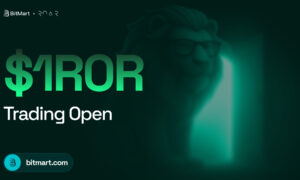Despite some industry buzz to the contrary, there are currently no exchange-traded funds or mutual accounts that focus on art. It’s too hard for brokerage houses to create art-based ETFs because of the generally illiquid nature of the art market. The fact that there’s only one of each painting or sculpture is precisely the reason why art is so scarce and, therefore, valuable.
Since you can’t simply go around buying more and more of Paul Cézanne’s paintings the same way that you might be able to invest in additional shares of stock – anyone who plans on adding art to their portfolio will need some other form of judging value.
So what can you do as an investor and artist to judge the value of art?
Non-Fungible Tokens (NFTs): A New Way to Invest and Assess the Value of Art
Non-Fungible Tokens (NFTs) are digital assets, and some of them have been sold for millions of dollars. Art is one of the most frequently traded digital assets, and it is a fast-growing market. For example, Beeple’s opus, a monumental collage – the first purely digital artwork ever offered at Christie’s, was sold online for $69.3mn.
The investment marketplace of NFTs is just at the beginning and one of the most inspiring new ways of buying and selling art. The offers are visible to the public on crypto exchanges like Binance and FTX. Other crypto services like Nasdaq-listed company Coinbase already announced that they plan to build an NFT marketplace.
Companies like Coinbase plan to build their marketplace and show that money is made for buyers, sellers, and service providers. Those marketplaces are an excellent alternative for less known artists to get visibility and for art enthusiasts to discover artists they would never have found otherwise.
However, it is fair enough to say that investing in non-fungible tokens has some risks involved. NFTs are close to cryptocurrencies, and they are still not as heavily regulated as the stock markets.
Generally, traditional investment news sources won’t carry much information on art investing, but that’s changing. You’ll want to pay close attention to the same sources from which you’ve always gotten investment figures. In addition, there’s a good chance that well-managed investment newsletters will start recommending stocks related to the Non-Fungible Token industry as the market continues to grow.
While it is uncertain if they will ever add an NFT directly to a portfolio, they most likely focus on investing in NFT-relevant growth stocks with high potential.
Overall, the NFT marketplaces are an innovative way for artists and art lovers to buy and sell art in a way they never did before.
Art Indices: The More Traditional Way of Researching Art Investments Value
Famous auction houses like Christie’s generally use the Art 100 Index from Art Market Research, which shows the average of 80 percent of prices a particular artist has gone for. Those who plan on selling masterpieces made by one of the top-selling 100 artists can immediately turn to this list. Problems start to occur when you have pieces done by someone whose paintings don’t sell as often.
Putting Up Rare Works for Sale
Keep in mind that this doesn’t necessarily mean trying to sell paintings by relatively unknown artists. Some of the world’s finest painters don’t break this top 100 list simply because their works are too rare for sale. If you have something that fits into this category, then the first thing you need to do is have it properly appraised. Art investors will generally have all of their works authenticated beforehand because there are many fakes in the market.
Art is tangible, but it isn’t like a real estate investment that can be clearly defined. Paintings that are authentic and have a specific appraisal cost should at least attract the interest of auctioneers.
Search for alternative art indices if you find yourself in this position. Of course, you know what you paid for the original work, but there’s a possibility that a more inclusive art list has tracked the painter in question. For example, some investors have specialized in the works of cubists like Fernand Léger and František Kupka. While these are unlikely to appear on all investment lists regularly, an index specializing in cubist painters’ art will likely show accurate prices.
Eventually, though, you’ll probably have to collect information on your own. When that happens, it helps to know where to look.
Doing Research on the Art Market
While it can be tempting to only sell items in person, you’ll want to check out all of the online galleries as well. Many of these will sell art much more quickly, so you’ll be able to access relatively updated statistics simply by browsing them.
Check out Christie’s as well as more commercial-grade sites like eBay. Though it might be unusual to see fine art sold through a standard eCommerce operation, it happens more often than you might expect. Some people might also look to these sites to find good buying opportunities, but there’s a relatively high risk of inadvertently buying a fake off of one of these sites.
Brick and mortar galleries are the traditional vehicles for art investment, though you usually can’t just call them up and ask for their index. However, if you plan on buying a few pieces, you might be able to get some information without spending any additional money.
No matter where you get your index from, though, you have to accept a relatively high tolerance for risk if you plan on investing this way.
Calculating Risk Tolerance with an Art Index
As soon as you’re privy to accurate numbers, you’ll probably notice that the average gains provided by the stock market outpace those of the art industry. That’s because many art buyers will have to sit on a painting for years if they plan to make any money with it. Take some time to look over the statistics you’ve collected, and you should be able to see just how much you’ll have to risk to make the kind of profits you’re expecting.
That being said, you might also learn you have a real passion for the fine art world. If that’s the case, then this might very well be the ideal investment product for you.



































